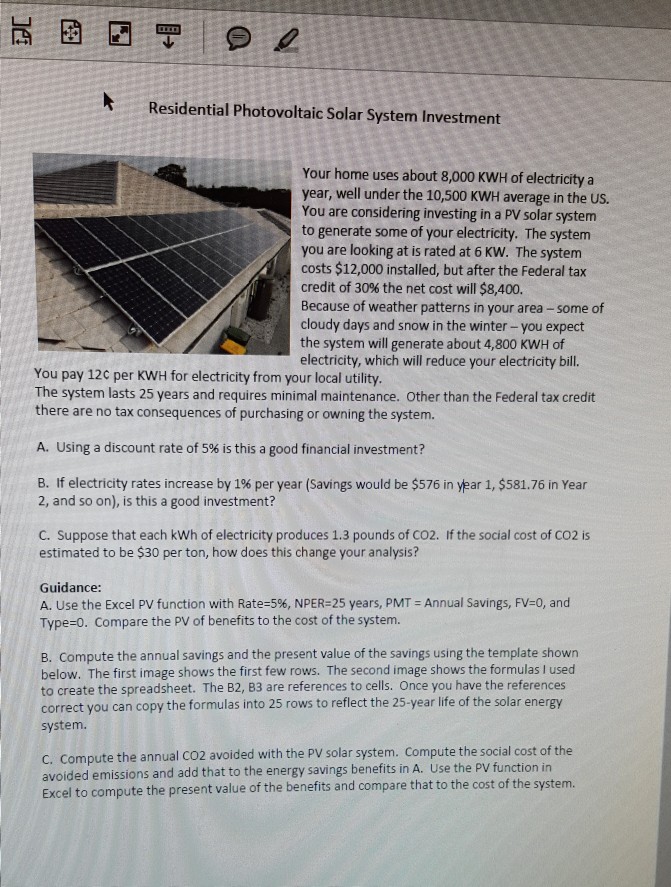Answered step by step
Verified Expert Solution
Question
1 Approved Answer
Residential Photovoltaic Solar System Investment Your home uses about 8,000 KWH of electricity a year, well under the 10,500 KWH average in the Us. You


Residential Photovoltaic Solar System Investment Your home uses about 8,000 KWH of electricity a year, well under the 10,500 KWH average in the Us. You are considering investing in a PV solar system to generate some of your electricity. The system you are looking at is rated at 6 KW. The system costs $12,000 installed, but after the Federal tax credit of 30% the net cost will $8,400. Because of weather patterns in your area -some of cloudy days and snow in the winter- you expect the system will generate about 4,800 KWH of electricity, which will reduce your electricity bill. You pay 12c per KWH for electricity from your local utility. The system lasts 25 years and requires minimal maintenance. Other than the Federal tax credit there are no tax consequences of purchasing or owning the system. A. Using a discount rate of 5% is this a good financial investment? B. If electricity rates increase by 1% per year (savings would be $576 in year 1, $581.76 in Year 2, and so on), is this a good investment? C. Suppose that each kWh of electricity produces 1.3 pounds of CO2. If the social cost of CO2 is estimated to be $30 per ton, how does this change your analysis? Guidance: A. Use the Excel PV function with Rate 5%, NPER-25 years, PMT Type-0. Compare the PV of benefits to the cost of the system. Annual Savings, FV-0, and B. Compute the annual savings and the present value of the savings using the template shown below. The first image shows the first few rows. The second image shows the formulas I used to create the spreadsheet. The B2, B3 are references to cells. Once you have the references correct you can copy the formulas into 25 rows to reflect the 25-year life of the solar energy system. c. Compute the annual CO2 avoided with the PV solar system. Compute the social cost of the avoided emissions and add that to the energy savings benefits in A. Use the PV function in Excel to compute the present value of the benefits and compare that to the cost of the system
Step by Step Solution
There are 3 Steps involved in it
Step: 1

Get Instant Access to Expert-Tailored Solutions
See step-by-step solutions with expert insights and AI powered tools for academic success
Step: 2

Step: 3

Ace Your Homework with AI
Get the answers you need in no time with our AI-driven, step-by-step assistance
Get Started


